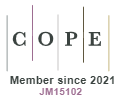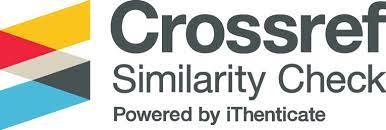Makroekonomiczne determinanty ryzyka kredytowego w Polsce ze szczególnym uwzględnieniem kursów walut obcych
DOI:
https://doi.org/10.18778/2391-6478.3.31.07Słowa kluczowe:
credit risk, determinants of credit risk, exchange ratesAbstrakt
The purpose of the article. The aim of the study is to show the impact of the key macroeconomic determinants of the credit risk of the banking sector in Poland in 2011–2020. This aim was achieved by analysis of the Pearson correlation coefficient and econometric models allowing to determine the impact of individual variables on the NPL index.
Methodology: The empirical part includes the presentation and description of basic descriptive statistics, as well as the calculation of the Pearson correlation coefficient with the interpretation of the obtained results. The dynamic econometric model describing the variability of the NPL ratio was built using mainly macroeconomic variables.
Results of the research: Research has shown the impact of changes in the unemployment rate and the inflation rate on credit risk. On the other hand, the impact of economic growth on the NPL ratio in the analyzed period was not statistically significant. The relationship between credit risk and changes in foreign exchange rates (CHF, USD, EUR) turned out to be negative in the analyzed period, which means that the increases in exchange rates of these currencies did not result in a significant burden of credit risk in the banking sector in Poland.
Pobrania
Bibliografia
Beck, R., Jakubik, P. and Piloiu, A. (2013). Non-performing loans: What matters in addition to the economic cycle? ECB Working Paper Series, 1515.
Google Scholar
DOI: https://doi.org/10.2139/ssrn.2214971
Breeden, J.L., Thomas, L. (2008). The relationship between default and economic cycles for retail portfolios across countries: Identifying the drivers of economic downturn. Journal of Risk Model Validation, 2(3).
Google Scholar
DOI: https://doi.org/10.21314/JRMV.2008.026
Castro, V. (2013). Macroeconomic determinants of the credit risk in the banking system: The case of the GIPSI. Economic Modelling, 31.
Google Scholar
DOI: https://doi.org/10.1016/j.econmod.2013.01.027
Ćurak, M., Pepur, S. and Poposki, K. (2013). Determinants of non-performing loans – evidence from Southeastern European banking systems. Banks and Bank Systems, 8(1).
Google Scholar
Klein, N. (2013). Non-Performing Loans in CESEE: Determinants and Impact on Macroeconomic Performance. IMF Working Papers, 13(72).
Google Scholar
DOI: https://doi.org/10.5089/9781484318522.001
KNF https://www.knf.gov.pl/publikacje_i_opracowania/dane_statystyczne [dostęp 26.12.2020].
Google Scholar
Nkusu, M. (2011). Nonperforming loans and macrofinancial vulnerabilities in advanced economies. IMF Working Papers, 161.
Google Scholar
DOI: https://doi.org/10.2139/ssrn.1888904
Novikov, I. (2012). The Empirical Estimation of the Influence of Credit Risk Determinants in Baltic States' Banking Sector. Journal of Modern Accounting and Auditing, 8(1).
Google Scholar
Raport Komisji Nadzoru Finansowego z 06.2020 r., Informacja na temat sytuacji sektora bankowego https://www.knf.gov.pl/knf/pl/komponenty/img/Informacja_na_temat_sytuacji_sektora_bankowego_w_2019_r.pdf [dostęp 30.12.2020].
Google Scholar
Szarowska, I. (2018). Effect of macroeconomic determinants on non-performing loans in Central and Eastern European countries. International Journal of Monetary Economics and Finance, 11(1).
Google Scholar
DOI: https://doi.org/10.1504/IJMEF.2018.10008415
Sztaudynger, M. (2018). Czynniki makroekonomiczne a spłacalność kredytów konsumpcyjnych. Gospodarka Narodowa, 296(4).
Google Scholar
DOI: https://doi.org/10.33119/GN/102228
Zeman, J. and Jurca, P. (2008). Macro Stress Testing of the Slovak Banking Sector. National Bank of Slovak Working Paper, 1, 1–26.
Google Scholar
Pobrania
Opublikowane
Jak cytować
Numer
Dział
Licencja

Utwór dostępny jest na licencji Creative Commons Uznanie autorstwa – Użycie niekomercyjne – Bez utworów zależnych 4.0 Międzynarodowe.














